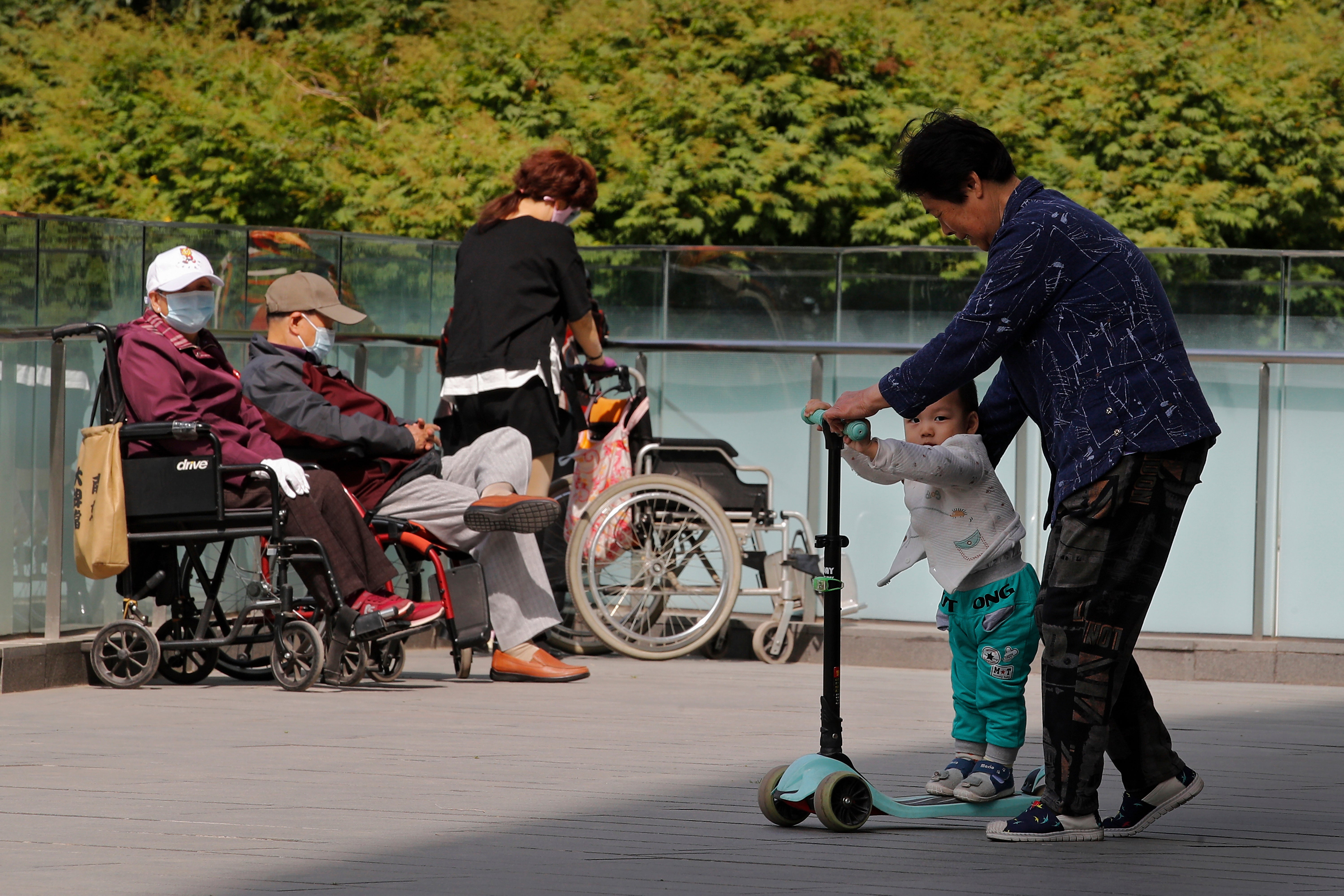China’s population passes 1.4 billion but growing at slowest rate ever recorded, census reveals
There has been a sharp drop in the population of working-age citizens in China

Your support helps us to tell the story
From reproductive rights to climate change to Big Tech, The Independent is on the ground when the story is developing. Whether it's investigating the financials of Elon Musk's pro-Trump PAC or producing our latest documentary, 'The A Word', which shines a light on the American women fighting for reproductive rights, we know how important it is to parse out the facts from the messaging.
At such a critical moment in US history, we need reporters on the ground. Your donation allows us to keep sending journalists to speak to both sides of the story.
The Independent is trusted by Americans across the entire political spectrum. And unlike many other quality news outlets, we choose not to lock Americans out of our reporting and analysis with paywalls. We believe quality journalism should be available to everyone, paid for by those who can afford it.
Your support makes all the difference.Once-in-a-decade census data from China has revealed that its population growth is at its slowest since such counts first became available in the 1950s, raising concern among experts.
On Tuesday, the data from China’s National Bureau of Statistics showed that the population of the country has reached 1.41 billion, but at a growth rate just under 5.4 per cent.
Ning Jizhe, an official from the National Bureau of Statistics, told the media: “The adjustment of China’s fertility policy has achieved positive results.” He added that the ageing of the Chinese population imposed a “continued pressure on the long-term balanced development of the population in the coming period.”
According to the official data released on Tuesday, the number of people between the ages of 15 and 59 has dropped by almost seven per cent and those over 60 dropped by more than five per cent since the last census was held in 2010.
Demographic experts say this ageing of the population is driven by the lowest overall growth in population in decades, lower still than the 5.8 per cent recorded 10 years ago.
The country’s birth rate has also been in decline since 2017 despite China’s relaxation of its one-child policy. It was in 2016 that China changed its one-child policy to allow couples to have a second baby — in the wake of fears that the population was ageing.
But the country is yet to see a resulting “baby boom” as was expected from the change in policy.
Experts attribute this to the falling marriage rates in recent years in China, the high cost of raising children in cities as well as women deciding to delay childbirth or avoid it.
The official data said that the average family size has shrunk to 2.62 people, down from 3.10 in 2010. Mr Ning told AFP: “The family households continued to downsize because of increasing population mobility and the fact that young people after marriages lived separately from parents with improved housing conditions.”

The 2020 census survey was completed in December with the help of over seven million volunteers who surveyed residents door-to-door, local news reported. The data was collected online this year for the first time, Mr Ning added, saying that the data was “rigorous” and “reliable.”
The census showed the Chinese population rose by 72 million over the past 10 years to 1.411 billion in 2020. It said annual growth averaged 0.53 per cent, down by 0.04 per cent from the previous decade.
The annual birth rate mostly declined from 2016 to 2019, even after the end of the one-child policy, with the exception of 2016. Last year, China recorded 12 million births, Mr Ning said, sharply down from 14.65 million in 2019. Huang Wenzheng, a demography expert at the Center for China and Globalization, a Beijing-based think-tank, told Reuters: “It doesn’t take published census data to determine that China is facing a massive drop in births.”
Even if China’s population didn’t decline in 2020, the expert said, “it will in 2021 or 2022, or very soon.”
Lu Jiehua, a professor of population studies at Peking University, told AP: “We are more concerned about the fast decline in the working-age population.” The working-age population was three-quarters of the total in 2011 but will fall to just above half by 2050, according to Mr Lu.
The Ministry of Labor and Social Security in China has said in 2016 that the group might shrink to 700 million by then. “If the population gets too old, it will be impossible to solve the problem through immigration,” said Mr Lu. “It needs to be dealt with at an early stage.”
Meanwhile, the ruling Communist Party in China wants to double output per person from 2020 levels by 2035. That would require annual growth of about 4.7 per cent.
Infographics provided by Statista
Join our commenting forum
Join thought-provoking conversations, follow other Independent readers and see their replies
Comments